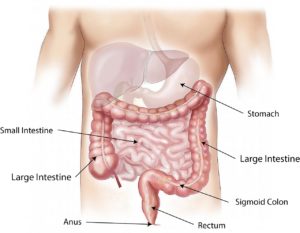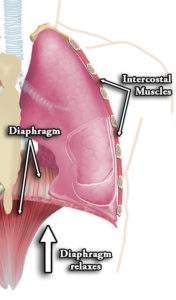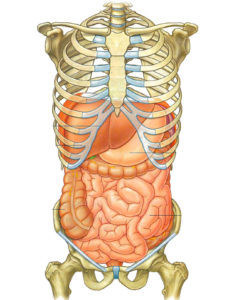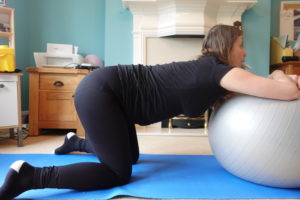Are you dealing with reflux, abdominal pain or digestive issues?
At My French Physio, our expert team uses Visceral Manipulation to address these concerns by gently releasing tension in your abdomen.
This approach helps relieve discomfort and promotes overall healing.
Book your appointment today to experience the benefit of Visceral Manipulation such as improved digestion, reduced scar tissue or reflux symptoms.

What is Visceral Osteopathy?
Visceral manipulation consists in re-harmonizing the tissue tensions which are fixed in the abdominal area but also in the thoracic area. These tensions can have an impact on the movement and positions of our viscera. Thus, they can disrupt the proper functioning of the latter (ex: descending colon during constipation) These spasms, through tissue links (muscles, ligaments, fascia, etc.), nervous but also lymphatic and vascular in some cases lead to pains on the whole body (ex: back pain, headaches, pubalgia, etc.)What Techniques are used in Visceral Osteopathy?
Visceral manual therapy is characterized by gentle massages, light stretching, but also more specific manipulations to restore movement in the structures concerned. Most of the techniques involve diaphragmatic breathing exercises.What is the role of the Diaphragm in Visceral Osteopathy?
 The diaphragm is a key part of visceral work. Its role impacts the whole body. This muscle acts like a pump: when it contracts (on inhalation), the diaphragm moves down and pushes the viscera downwards to allow the lung to inflate. Its movement therefore affects the whole body.
A spasm diaphragm (which moves less) can cause compensation of other respiratory muscles and will lead to pain in the neck, shoulders and also headaches.
A spasm of one or more of the pillars of this muscle (see photo), that is to say when it clings to the lumbar spine, can cause back pain.
As we mentioned above, the diaphragm has an impact on all the viscera of the human body. Daily life (fear, stress) can influence how well it works. Simple breathing exercises can release abdominal tensions and resolve digestive problems: stomach aches, constipation, etc.
The heart rests on the diaphragm: these two organs are linked together by ligaments. Any diaphragmatic blockage or spasm can affect the proper functioning of the heart.
The diaphragm is a key part of visceral work. Its role impacts the whole body. This muscle acts like a pump: when it contracts (on inhalation), the diaphragm moves down and pushes the viscera downwards to allow the lung to inflate. Its movement therefore affects the whole body.
A spasm diaphragm (which moves less) can cause compensation of other respiratory muscles and will lead to pain in the neck, shoulders and also headaches.
A spasm of one or more of the pillars of this muscle (see photo), that is to say when it clings to the lumbar spine, can cause back pain.
As we mentioned above, the diaphragm has an impact on all the viscera of the human body. Daily life (fear, stress) can influence how well it works. Simple breathing exercises can release abdominal tensions and resolve digestive problems: stomach aches, constipation, etc.
The heart rests on the diaphragm: these two organs are linked together by ligaments. Any diaphragmatic blockage or spasm can affect the proper functioning of the heart.
Who Visceral Osteopathy Can Help?
Digestive issues:
- Digestive disorders
- Constipation
- Feeling of heaviness
- GERD (gastroesophageal reflux disease)
- Hiatal hernia (non-protrusive)
- Chronic eructions
Babies and Children
- Stomach aches and a lot of gas
- Constipation
- Reflux
- Sleeping troubles
Women Health:
- Urinary tract infection
- Urinary leakage
- Pain in the perineum
- After Giving Birth (C-section, general check-up…)
Post surgery / Trauma:
- Scar
- Ptosis (loss of support) kidney / liver / stomach
 Tendon and Joint pains
Tendon and Joint pains
- Back pain
- Headache
- Neck pain
- Bilateral tendonitis (eg: epicondylitis, Achilles tendon, etc.)
- Sciatica
- …
Skin problems
- Eczema, Psoriasis, Acne, etc.
Pain in the chest
- Choking sensations
- Painful points in the chest after an effort.
You can come and consult us at Pimlico, in Camden Town or schedule an online consultation.



